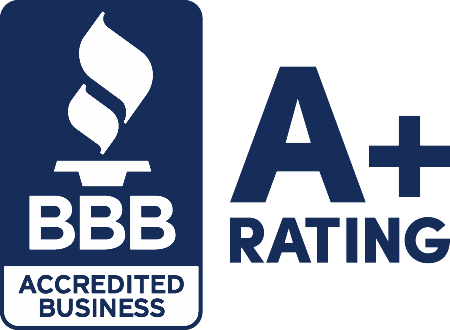What’s the Difference Between Growing and Scaling?
Contrary to popular belief, growing and scaling are not synonyms. Growth refers to the concept of making something more significant. This can be revenue, productivity, net worth, etc. Hence, a business that is looking to grow is only concerned with making that number go up or achieving a certain percentage to reflect the increase. Once that goal is reached, the business can legitimately say it has grown. It doesn’t matter how they reached that goal.
Scaling, on the other hand, refers to the processes or resources related to growth. If scaling is your priority, you’re more concerned with changing the way the business operates. Examples of these processes or resources might include technology, marketing spend, or operational procedures.
A business doesn’t necessarily have to make changes in these areas to achieve the aforementioned numerical goals. But these changes will likely make the company more efficient and sustainable.
How To Tell If You Want to Grow or Scale Your Business
If your top priority is making a number go up, you want to grow, not scale. It’s entirely feasible to increase revenue, productivity, or net worth without improving operations.
If your top priority is more along the lines of securing new equipment, launching a new division, or building your email list, you want to scale.
What if you want to do both? This is the ideal situation, and it’s called scalable (or manageable) growth. When you achieve scalable growth, you can reach numerical goals without consistently spending more money or putting in more hours. As a result, there’s plenty of resources available to reach for even bigger goals.
How Can You Tell If You’re Ready To Grow Your Business?
Businesses that grow successfully know what they do best, what they could be doing better, and which elements have been most integral to their success thus far. You can determine if your business meets this criterion by asking yourself a series of highly specific questions.
These questions also address the needs of your current and potential customers. No initiative is worth pursuing if you aren’t sure your target audience will respond accordingly.
Here are six questions to ask yourself before growing your business:
What Is the State of Your Core Product or Service?
Most businesses generate the majority of their revenue from a single product or service. This is what your longest customers associate you with, as it’s simply what you do best.
But in addition to identifying your core product or service, you must examine the looming challenges that could potentially jeopardize its reliability. For example, your core offering could eventually be compromised by a new advancement in technology. A disruptive competitor might have figured out a cheaper, more straightforward way to offer the same benefits as you.
In these cases, you might have to make some changes just to keep your current customers before you even think about bringing in new ones.
Have You Spoken to Your Customers?
You don’t know what your target market wants until you talk to them firsthand. It’s easy to make assumptions when you’re excited about a new idea. But before putting that idea into action, you must first make sure your perception of your target market aligns with reality. Possible ways to do this include surveys, social media posts, or good old face-to-face interactions. Even if your assumption is correct, you will always learn something new by monitoring your customers’ changing lifestyles.
Richard Branson started Virgin Airlines after having several negative experiences as a passenger on other airlines. Most of these experiences were attributed to one thing he said in 2010: “dreadful service.” But before acting on his observations, Branson spoke to fellow travelers as much as possible. This was how he discovered their desires for Virgin staples like the onboard bar, massages, and power outlets at every seat. To this day, Branson makes phone calls to random customers and asks what Virgin Airlines could improve for their next flight.
If you plan on launching a survey, you need to offer something in return for completing it. You can go with a free voucher, a discount, or a competition with valuable prizes. As you launch more surveys, you’ll gain a firmer understanding as to what kind of offers your audience prefers.
Is Your Credit Score in Good Shape?
Poor credit can prevent you from obtaining advantageous financing tools like business credit cards and business loans. Most business credit cards offer great rewards programs for typical business expenses. And though you might not need a business loan or business line of credit right now, you never know when you’ll have to come up with a large sum at a moment’s notice. If your credit score isn’t in the best shape, you might want to focus on repairing it before taking on more debt or increasing your spending in general.
Will Your Core Values be Compromised?
The desire for growth can cause companies to drive their customers away. How does this happen? In many cases, it’s because the company prioritized growth over its core values.
Successful companies are committed to values and goals that set them apart from their competitors. For example, a company that makes children’s toys might owe its success to the fact that its products are made locally instead of overseas. Another company might offer 24/7 customer service while its competitors take an average of twenty minutes just to pick up the phone.
On one end, these elements could be somewhat restrictive. Making products locally costs a lot of money, and offering 24/7 customer service is very stressful. But if these companies were to abandon their values, their customers might very well leave them in return. Sometimes, your core values are just as important as the quality of your offerings.
Is Your Success Consistent or Temporary?
It’s only natural to develop a growth mindset when business is on the upswing. But is this spike in customers gradual or sudden? At first, the latter scenario suggests that all these new customers have finally realized how fantastic your business is. From this day forward, they will pretend that your competitors do not exist. However, an increase in business could have nothing to do with the quality of your offerings. It could be entirely attributed to seasonality, market fluctuation, or simply the allure of a new, local business in town. Thus, you should probably wait a few more months to determine if the change is temporary. If so, you might not be ready for growth just yet.
Have You Groomed Top Employees for Leadership?
When businesses grow, the business leader has less time to oversee operations. This responsibility must, therefore, be given to someone else.
Research has found that promoting current employees to leadership positions poses less risk than recruiting outside hires, regardless of their experience. For this reason, a company that is prepared to grow should already know which employees have the potential to be great leaders. This employee has taken on increasingly demanding roles and has inherited the business leader’s dedication to the business.
However, being an expert in a specific field doesn’t necessarily mean you’re ready to manage your team of workers. Therefore, business leaders should make sure they are training their top employees in soft skills like communication.
In summary, being a top employee doesn’t automatically qualify someone to be a leader. They must have all the required skills, especially those related to employee management.
Which Resources Do You Need to Grow Your Business?
Simply put, businesses that are ready to grow have a stronger sense of professionalism and legitimacy. Employees have no reservations about the future because they can see that the business leader knows what they’re doing and values the business’s reputation.
Here are the specific resources businesses need to attain this status:
Business Growth: Documented Systems and Processes
Early employees of growing businesses tend to have their way of doing things. There’s no need to document their approach to daily tasks because no one works under them, and they handle most of their responsibilities on their own. When a new employee comes on board, they figure out their approaches for completing tasks as well.
This only works, however, for small teams. Once the team starts to grow, new employees must have documented processes they can follow to begin contributing to operations as quickly as possible. Growing businesses cannot afford to sacrifice the time it takes for new employees to teach themselves how to complete tasks.
Documenting a formal process for getting things done makes training and overall operations more efficient. The business leader doesn’t have to wonder why individual employees aren’t as familiar with the essential information that every employee should know.
Formal processes are also a significant reason businesses like McDonald’s can consistently open more locations without compromising their products’ quality. Every McDonald’s follows the same processes and therefore operates with the same speed and efficiency.
Business Growth: Strong Leadership
All the industry knowledge in the world doesn’t necessarily make someone a great leader. Business growth places a lot of pressure and stress on the team. Business leaders cannot expect their employees to put in extra effort if they’ve done nothing to gain their loyalty. In addition to maintaining a positive attitude, business leaders can build loyalty by showing appreciation and support. Employees are more likely to go above and beyond for someone who truly understands the sacrifices they regularly make.
Great business leaders are also expert communicators. They give instructions clearly and make sure everyone is aware of short-term and long-term goals. To build confidence in employees, business leaders must effectively communicate why they believe the company will be successful in the first place.
Business Growth: Human Resources
When a business is just starting, the business leader typically handles all HR-related issues. They field all questions about compensation, benefits, company culture, training, and so on. This might work just fine until the team expands, and their leader no longer has time to answer these questions. Without clear guidelines for HR-related issues, new employees don’t feel like they are in a professional environment and might question the whole operation’s legitimacy.
Thus, a business cannot grow without an HR specialist, or at least an HR service. Once this is out of the way, the business leader can devote their full attention to the initiatives at hand. Refusing to prioritize HR also gives employees the impression that their leader doesn’t have their best interests at heart. Would you give your loyalty to someone who doesn’t have time to answer questions about health benefits or retirement packages?
Business Growth: Do You Have a Plan If It All Works Out?
We’ve repeatedly alluded to the risk of not being ready for growth. Sometimes, it’s not the increased workload that the business isn’t prepared for. It’s what happens when all that hard work pays off. Remember, you don’t necessarily need to make significant changes to boost sales or revenue. But what happens when you now have to maintain the satisfaction of 100 customers instead of 20?
While you might not need an elaborate strategy to increase sales, you certainly do need one to keep those new customers. This might include a new sales system, a bigger team, a new website, etc. You might also need to delegate or automate specific tasks to give yourself more time to focus on meeting this surge in demand. Growing businesses must have a plan that outlines the specific changes they will make should their growth initiative succeed.
What Kind of Businesses Grow Successfully?
Now that we’ve established the resources required for business growth, we can move on to the more intellectual or strategic requirements. Businesses that grow successfully tend to operate with a certain mindset. They know what kind of information will play the most significant role in their growth and are fully prepared for the various obstacles lying ahead.
Here are eleven key characteristics of businesses that are ready to grow:
1. They Understand the Time Investment Required for Growth
Business growth involves a tremendous investment of both money and time. The latter doesn’t just pertain to growth-related tasks, like looking for new employees or developing a marketing campaign. Odds are, the growth process will naturally cut into other elements of your business. For example, you might have to spend more time talking to vendors to ensure all of your orders arrive at the right time. You might have to meet with your accountant more frequently to stay updated about new expenses and cash flow.
So, before moving forward with growth initiatives, you must ensure that operations can run smoothly without your help. You probably won’t have time to correct these issues on your own. Productivity levels cannot be hampered by disorganization, misdirection, or miscommunication. Likewise, you must create plenty of time for the aforementioned extra tasks. If you have already automated or delegated everything you can and you still have hardly any time in the day, you might not be ready to grow your business.
2. They Watch ALL of Their Competitors Closely
All successful businesses have something that makes them unique. For this reason, it can be difficult to compare yourself to your competitors. If anything, you’ve probably only focused on your competitors’ faults since it’s your job to win where they lose. However, if growth is in your sights, you must view your competitors as a source of valuable knowledge. Which strategies worked for them, and which did not? What have they done that deviates from industry standards? If you aren’t learning something from your observations, you aren’t looking hard enough.
Customers of independent coffee shops, for example, might assume that the owners of their favorite hangout want nothing to do with Starbucks. But if those business leaders are smart, they have accepted that they have much to learn from their industry giants. No, you don’t have to replicate their exact strategy. You just have to replicate the logic behind the strategy and apply it to your target audience.
3. They Know What Generates the Most Value for Customers
We’ve already established your core product or service. This next requirement, however, requires you to dig a little deeper in this direction.
Successful marketing campaigns don’t advertise basic features or benefits. They promote the emotional or psychological benefits of your offerings. Think of how real estate agents market their products. They don’t just sell houses. They sell the lifestyle that comes with living in a particular area. Why do they do this? Because they know that this lifestyle is the most significant value they can provide.
Thus, you must figure out the highest value you provide to your customers or the most significant problem your offerings solve. From here, you can focus on getting better at delivering this value or solving this problem. Though the specifics of your offerings might change over time, the value they provide cannot.
Understanding the most significant value you provide is crucial for growth because it lets you glimpse into your business’s future. This is arguably the one element of your business that will never change, regardless of what happens to your industry. Thus far, your business’s success suggests that your target audience will always have the emotional or psychological problems you solve. Do you help your customers feel unique or confident? Do you give them peace of mind about a stressful subject? Knowing your customers on this personal level is key if you intend to meet their needs continuously. This segues into our next requirement:
4. They Know Their Target Audience Inside Out
Smaller businesses typically grow by niching down or segmenting their target audience into a smaller group. The previous section dealt with providing value and solving problems. Knowing this information puts you on the path to learning as much as possible about your target audience, down to the very last detail. You might know the central problem you solve. But do you know how this problem developed in the first place?
Simply put, growing businesses should be able to answer virtually any question about their target audience. How much money do they make? What kind of clothes do they wear? Where do they live? The more you learn about your target audience, the closer you will feel to them as people. When you know someone on this level, it’s easier to anticipate shifts in their interests. As the world changes, you’ll already have an idea of how your target audience will react.
More importantly, learning about your target audience will also provide insights into marketing and sales strategies. You’ll know how to tailor the subject lines of your emails, what kind of articles to share on social media, and other products they are most likely to spend a lot of money on.
5. They’re Aware of Additional Expenses
Business leaders often underestimate the actual cost of growth-related initiatives. It’s primarily because every significant expense naturally results in other costs. Perhaps the most common example is full-time employees. In addition to their salaries and payroll taxes, full-time employees require multiple forms of insurance. And since you are trying to bring in more experienced employees, you will likely have to invest in more competitive benefits.
Another typical example is the cost of a new location or office. On your first day of work, you might discover that even though you’re using the same wireless router, the Internet connection in your new office is much weaker. That’s one more repair you’ve got to pay for.
Lastly, consider the various circumstances that could increase the cost of a marketing campaign. Maybe the weather starts getting warmer a little earlier this year, which means you have to start marketing earlier as well. Perhaps a global event offsets the progress of your campaign, and you have no choice but to start all over again.
In summary, the likelihood of additional expenses is so high that growing businesses must plan for them. If you barely have enough cash to afford those new employees, or that new office, or that new campaign, you probably won’t be able to cover the additional costs. Hence, growing businesses must have plenty of cash left over after making their initial investments.
6. They Prioritize Customer Retention
Successful entrepreneurs continuously rave about the importance of customer retention. If you can’t fulfill current customers’ needs, you probably won’t have much luck expanding your reach. eCommerce businesses adhere to this rule by eliminating any shipping and logistics issues before even thinking about expansion. They do whatever they can to maximize satisfaction for current customers. After all, your existing customers are your best salespeople. Research has found that people trust referrals over any other form of marketing.
It’s easy to fall into the trap of believing that your current customers love your offerings so much that they will continue to buy them without being prompted to do so. The truth is, no matter how happy your customers were after their first purchase, you need to make a conscious effort to stay in their lives. You must consistently remind them that you will make them even happier the next time they give you their business.
Not only is keeping current customers cheaper than gaining new customers, but it’s also less risky from a marketing standpoint. Some businesses are so dedicated to customer retention that it makes up the bulk of their marketing budget. It’s safer to bet on current customers making referrals than their ability to gain new customers on their own in their eyes. But referrals will only happen if you consistently prove that you understand your existing customers’ needs and preferences.
7. They Know Which Tool Will Wreck the Business If Destroyed
Throughout this guide, we’ve emphasized several essential elements of a growing business. This includes your team, your current customers, the business leader, your brand identity, etc. Though all of these things are important, only one of them probably has the power to wreck your entire business.
Think of your business as if it was a machine. Each component has its value. If a particular component breaks, the machine might run a little slower but produce the same results. Another component, on the other hand, could be like the engine of a car. A successful business leader can discern the doors from the engine, even though every business has a different engine.
For some businesses, the engine could be their two most valuable employees. Others might be able to sustain themselves in the event of a top employee quitting but would be in serious trouble if their biggest client is forced to close its doors or seek greener pastures. You might very well conclude that you, the business leader, are the engine. What happens if you become too stressed to concentrate or your time is compromised? It’s up to you to make the necessary investments to prevent this from happening.
8. They Aren’t Afraid of the Truth
No business leader likes hearing about their business’s flaws. It’s disheartening to find out that a significant aspect of your business model isn’t working. But no one gets it right on the first try. It’s what you do afterward that matters most. You could even say that business growth is just another word for “learning from your mistakes.”
If only the truth were right in front of you. Unfortunately, you probably won’t learn what your business is doing wrong unless you ask your customers. If you don’t consistently ask for feedback, you’re going to get blindsided when customers leave. You should never assume that you’re doing everything correctly just because no one is complaining. And even if your business is doing well, you should still ask for feedback. There’s always more you can do to make your customers love – not like – your business.
9. They are Patient with New Strategies
Entrepreneurs are notoriously impatient. They are wired to act, not wait. But you won’t know what works and what doesn’t without sufficient data. Thus, when growing your business, you must give your strategies time to produce results. You cannot conclude that a plan has failed because it didn’t immediately bring in scores of new customers.
For instance, with marketing, a strategy can only be deemed a failure if it has proven to do more harm than good. Decent results are still results. But business leaders often get bored or impatient and end up canceling marketing campaigns that are yet to revolutionize their business. They forget that while another strategy might look more promising, there’s no proof that it will be just as successful as the previous one.
There’s nothing wrong with wanting to try something new. But not if you can’t afford it without canceling everything else. The hope for more substantial profits is not a reasonable excuse for killing a pipeline of incoming cash.
10. They Build Up Their Company Culture As They Grow
Without company culture, work just feels like work. It’s dull and colorless. Employees come to work solely because they have to, and their performance is limited to the bare minimum. No business can achieve substantial growth under these conditions.
Company culture boosts overall performance by instilling motivation and discipline. Employees work harder because they feel more connected to the business. And though some aspects of your business will inevitably change, your company culture stays the same.
For this reason, growing businesses must strengthen their company culture. So, think about what you could do to make your company culture more present in your employees’ day-to-day lives. There are basic examples like wall art, unique perks, or the layout of your office. But anyone can do these things. Strong company culture comes from your management style, internal communication, and the kind of behavior you choose to reward. You cannot expect employees to follow core values if you do not outwardly exhibit them each day.
11. They Don’t Overspend
Businesses that try to grow too quickly often take on unsafe levels of debt and incur unnecessary expenses. They are so optimistic about the future that they do not doubt that their upcoming boost in revenue will cover their new bills. At first, avoiding excessive debt or unnecessary expenses doesn’t seem too hard. Anyone can tell when they can’t afford something, right?
But sometimes, these problems slowly creep up on you in the form of smaller expenses. For example, let’s say you’ve hired a furniture company to remodel your office. The job is tremendous, so you can understand why it comes at a high cost. But then you realize that the company is charging you three delivery fees for three appliances, even though all three only required one trip. This is comparable to a law firm attaching a fee for photocopying documents. The fact that you’re being overcharged for the small fees suggests that you were overcharged for the overall bill as well.
Growing businesses cannot afford to be overcharged, just like they cannot afford to overspend. Instead, their extra cash should be reserved for the additional expenses we touched on earlier.
How Can You Tell If You’re Ready To Open a Second Location?
For many businesses, expansion means opening additional locations. Since this is a life-changing decision, it requires significantly more thought than taking on new hires, securing new equipment, or introducing new operational procedures. Unlike these tactics, adding locations can make or break your business.
Here are a few questions to ask yourself to make sure opening a second location is indeed the right move:
1. Make Sure It Matches Your Vision
Virtually all successful entrepreneurs have at least one thing in common: vision. Entrepreneurs must have crystal clear ideas of their business’s goals, along with the requirements for achieving them. This includes their business model, website, and of course, the appearance of their locations. Thus, when looking for a new space, you must know exactly what kind of space will help you achieve your goals.
You might be thinking, how much information could I possibly gauge from an empty space? But this is the level of detail that goes into the vision of a successful entrepreneur. Features like the size, dimensional layout, and location must not hamper your ability to exude your business’s core values.
2. Develop Accurate Financial Projections
As we mentioned earlier, significant business expenses naturally create other costs. Securing property happens to be one of the most expensive methods of expansion. It’s safe to assume that some sort of unknown expenses will arise, likely when you least expect it. But that doesn’t mean you shouldn’t strive to develop accurate projections for the total cost over a given period.
How long will it take for you to make back your investment? Ideally, this shouldn’t take more than a few years. If you plan on financing the property, your business’s debt-to-equity ratio and debt-service coverage ratio should be factored into your projections as well. Companies that are leasing new property should make sure the lease has a tenant improvement allowance. This represents the amount the landlord is willing to spend on renovations. Some landlords might have higher limits because it allows them to sell the space at a higher price if you decide not to renew your lease.
3. Should You Buy or Lease?
There are pros and cons to either option. Leasing seems like the better option because it’s cheaper, and you’re not stuck there if your business outgrows the space. Buying, however, may be your key to accessing substantial amounts of financing. When you buy property, that property becomes a company asset that can be used as collateral for a business loan or the purchase of even more property. Collateralized or “secured” business loans can provide amounts up to $5 million along with low interest rates and ideal terms. Might your company need a large loan at some point soon?
4. Is the New Location Right for Employees?
This pertains to brick-and-mortar shops as well as office-based workplaces. Every business wants its employees to feel comfortable at work. Employees are more likely to work harder when they aren’t spending their days dreaming about being elsewhere.
You can create this scenario by providing an easily accessible space, has working facilities and comforting enough to foster a healthy mind. If there’s nothing available that fulfills all three of those qualifications, don’t risk jeopardizing productivity. Your employees might seek other options if the commute is long and expensive.
A problem with just one facility, be it the bathroom, air conditioner, refrigerator, or internet connection, could have a dramatic impact on morale. You want your employees to take as little time as possible, settling into the new location. So, make sure there are no surprises that could come up during the initial adjustment period.
5. Will It Jeopardize Quality or Brand Identity?
Bigger is not always better. In comparison to your competitors, the size of your business could be significant for your target audience. Plenty of companies earn enough revenue to justify multiple locations, but they refrain from expanding. They are aware that their small size plays a massive role in their appeal. Also, certain types of products cannot be replicated with a documented process without compromising quality.
We previously referenced the advice of Richard Branson. He said “small is beautiful” at this same conference while noting that Virgin Airlines is a much smaller company than his competitors. If Virgin were just as large as other airlines, they would likely lose their “exclusive” appeal.
Adding locations is particularly risky for local businesses. Do you owe a great deal of your success to your original location and relationship to the local community? A new location cannot lack any of the qualities that made the original location special.
What Are the Most Common Business Growth Mistakes?
The excitement of growth can cloud your judgment and create an unrealistic picture of your success. It’s also easy to go overboard once a growth initiative gains traction. Throughout this process, it’s crucial to remain grounded and remember that, in most cases, slow and steady wins the race.
Here are some of the most common business growth mistakes:
1. Becoming Complacent After Reaching Certain Milestones
No matter how much success your business achieves, you cannot get complacent. Even the biggest companies in the world continue to market themselves and launch new strategies. Many companies assume that once they’ve attained a certain number of customers or earned a certain amount of revenue, they can stop pouring money into marketing and stop looking for areas of improvement. Why market yourself, a business leader might think, when you barely have enough time to service the clients you already have?
This seems like an entirely rational idea until those numbers start to dwindle or a disruptive competitor bursts onto the scene. If you’re too busy to think about marketing or improvements, you need to make some changes to your daily routine. This is why business growth is widely viewed as a continuous process.
In the same vein, a business might get complacent during their industry’s slow season. Why market yourself or make improvements when your industry is the last thing on your customer’s mind? The answer is simple: when it gets busy, you won’t have time to do these things.
Sure, there is a time when you’re expected to take it easy. It’s called a vacation! Business leaders take time off so they can maintain the same work ethic throughout the year.
2. Trying to be Perfect
Nobody’s products or services are perfect. They weren’t created to be perfect. They were created to serve a central purpose. For example, those expensive shoes you just bought were made to be comfortable and stylish. You might be a little bummed out when their durability begins to fade within a year. But you didn’t buy the shoes because they were durable. Many companies make the mistake of believing that improving quality means improving all facets of what you do. They are under the impression that their customers will not forgive them for lacking in one department even though this department was not a part of their original mission statement.
Think of all the up-and-coming coffee businesses that have capitalized on Starbucks’ mistake of trying to do too much. Rather than improve the quality of its core products, Starbucks attempted to improve the quality of all of its products. Smaller coffee shops might offer just a few food items, none of which deviate from its image. They aren’t worried about pleasing potential customers who might want “healthier options” or more than just breakfast items.
3. Going Overboard with Discounts and Promotions
It’s easy to get carried away with discounts or promotions because they can be good marketing tools. Some companies offer them nearly all-year-round and unintentionally end up slashing prices to an extreme and tarnishing their reputation. This is especially dangerous if your products are cheap to begin with. A thrift store might offer 50% off on all products but only once or maybe twice a year. And from a marketing perspective, any email with “Now’s your last chance!” or “One time only!” in the subject line probably won’t garner as much interest if they show up in your inbox almost every month.
The goal of your special deals should be to communicate a sense of limited access, as opposed to your every day, run-of-the-mill bargain. You might want to consider making your promotions more specific or only offering them when releasing something new, like bundles.
4. Trying to Do Everything Yourself
If you were to ask a pool of entrepreneurs why they started their businesses, a great deal of them would probably say, “If you want something done right, you’ve got to do it yourself.” Business growth often requires ramping up areas like marketing, sales, or customer service. Up until now, the business leader might have handled these responsibilities on their own. Hence, it can be challenging to accept that they now have to pay other people for their expertise.
If you genuinely believed you shouldn’t pay for something you could do yourself, well, you wouldn’t pay for anything at all. Think about it: Is there anything you couldn’t learn to do yourself? Give yourself enough time, and you could become a marketing wiz or a graphic designer or an accountant. But now that your business is growing, you have to spend your days doing what you do best. So, rather than risk coming up short in the areas mentioned above, take the time to hire an expert. Not every business leader has to be a jack of all trades.
5. Mistaking Interest for Data
There’s heightened interest, and then there’s cold hard data. Many businesses have mistaken the former for the latter. They made growth-related investments only to discover that their companies were not as successful as they thought.
It’s only natural to get excited when more people show interest in your business. Your social media accounts are blowing up, customers are asking for new offerings, and potential business partners are contacting you. At first, these seem like perfectly logical reasons to invest in growth. But all the interest in the world doesn’t always translate to data, like revenue or profitability.
In other words, business growth is only justifiable when you can prove your success with hard evidence. This harks back to the section about mistaking temporary success for long-lasting success. Businesses frequently forget that seasonality, passing trends, or external events can bring new customers just as effectively as high-quality work. Hence, you must have the patience to determine if a surge in demand is temporary or permanent.
6. Lying About Your Success to Gain Customers
The abundance of inaccurate information floating around the web has made it more tempting for companies to flat-out lie about their accomplishments. Everyone else is lying to bring in more business; why shouldn’t I?
But if you haven’t earned your success, you wouldn’t even know what to do with those new customers. And while you might be able to trick someone into buying from you once or filling out a lead form, you can’t trick someone into giving you their loyalty. After all, customer retention is more integral to growth than gaining new customers.
If you can’t think of a reason for someone to give you their business without lying, you have some serious re-evaluating to do.
7. Thinking “Growing” is Just Another Word for “Hiring”
Increasing human capital isn’t always the most efficient way to increase productivity or revenue. Thanks to software tools and the ever-growing gig economy, businesses no longer have to hire more full-time employees as soon as demand increases. Due to the cost of full-time employees, companies are now recommended to only hire when there is no other option. It’s entirely feasible to dramatically increase revenue with just one or two new hires per year.
So, before increasing staff, make sure there are no other changes you can make to boost productivity and keep customers satisfied.
8. Not Devoting Enough Time to Training New Hires
If you don’t have the time to train new employees, you don’t have the time to grow. “I shouldn’t have to hold every new employee’s hand,” a business leader might think. This new employee is supposed to have considerable experience with the tools we use every day, so there shouldn’t be much left to teach. Well, your larger competitors are here to tell you to let go of your ego for the sake of logic. It’s simply not realistic to assume that a new hire will meet your business’s performance standards or play by your rules if you do not take the time to explain them. Your larger competitors retain their employees because they take the time to educate them about company culture, business model, etc.
For example, let’s say someone begins working for a boss who is not exactly a natural when it comes to communication. The boss cares deeply for his employees, but he speaks in a manner that can be very off-putting, especially for someone who isn’t aware that such language is not a reflection of the boss’s character. It’s safe to say the new hire’s first weeks would be infinitely more productive if he were taught how to interpret the boss’s communication rather than wondering, “Am I about to get fired?” after their first conversation.
9. Raising Prices for No Justifiable Reason
There’s nothing wrong with raising your prices to reflect the heightened quality of your work. But you must be careful of attaching extra charges in the wrong areas. For example, let’s say you hire a furniture company to put in some carpeting. When you get the bill, you find out that an additional charge has been tacked on because the amount of carpet you ordered required the company to move your couch. Yes, it took a little extra time to move the sofa, but what kind of system could the company have used to determine how much to charge for that specific task? Odds are, the client is not going to understand the rationale for charging a certain amount for moving a couch. If you can’t explain why a small fee exists, you are better off factoring it into the overall charge.
Small fees are justifiable when they are reasonable or easier to understand, like court costs to a legal bill or an extra few hundred in print shop costs for a graphic designer. These fees can also stem from additional services that are not given to every client. You probably wouldn’t return to a hairdresser who charges you extra for shampoo because you assumed washing your hair was an essential task. However, the hairdresser would be correct to charge extra for conditioner, highlights, or other services the customer has agreed to in advance.
To clarify, you cannot just charge extra because you need the extra cash. There must be an apparent, indisputable reason for the price increase.
Business Growth: Proceed with Caution
The key to avoiding these mistakes is to accept the difficulty of business growth. Not every successful business is prepared to grow, and the growth process rarely goes smoothly. But as long as you’re realistic about your business’s potential and your customers’ needs, you’ll be able to dodge any curveball that comes your way.













